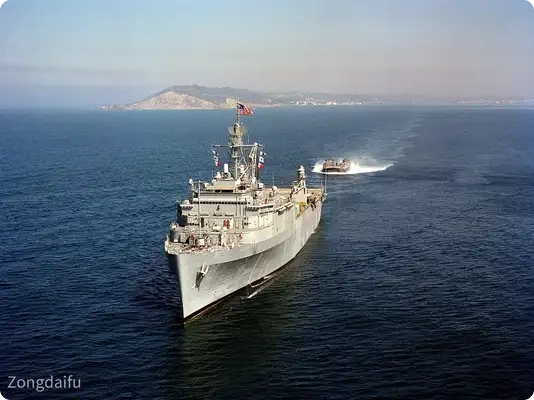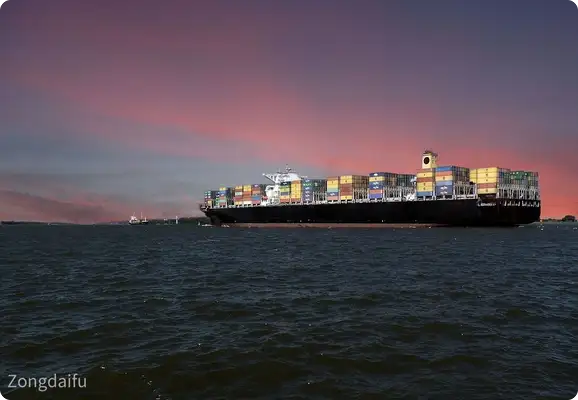Recently, the United States has made a new move. A bill called "SHIPS for America Act" came out of nowhere and instantly became the focus of the global trade field. The bill stipulates that within 15 years from the date of entry into force, at least 10% of all goods imported from China to the United States must be transported by U.S. flag ships. This provision is for U.S. importers. It will increase from the fifth year after the bill takes effect, increasing by 1% each year, and reaching 10% 14 years after it takes effect. If the importer fails to meet the target that year, a high fine will be imposed. At the same time, the bill also requires that if the buyer of imported goods is the U.S. government, then 100% must be transported by U.S. flag ships.

I. Behind the bill: the “anxiety” of the US industry
Revitalizing the U.S. domestic shipbuilding industry
1. Severe industrial decline: The U.S. shipbuilding industry was once glorious and was the world leader during World War II, but the "hollowing out of the industry" over the past few decades has gradually made it lose its competitiveness. Today, the United States has only 80 merchant ships engaged in international trade, which is a huge gap compared to China's 5,500 merchant ships. The international market share is also occupied by China and South Korea.
2. Employment and economic considerations: The shipbuilding industry involves many links in the industrial chain and can drive a large number of jobs. By revitalizing the shipbuilding industry, the United States hopes to create more jobs and promote the development of related industries, such as steel and machinery, thereby promoting overall economic recovery and reducing trade deficits.
Coping with competition from China’s shipping industry
- The rise of China's shipping industry: In recent years, relying on its strong manufacturing system, China has built an integrated shipbuilding industry chain from design to construction, repair and maintenance. It has the world's leading scale and cost advantages, which has posed a strong competition to the US shipping industry.
- Enhance the competitiveness of U.S. shipping: Through this bill, the U.S. attempts to artificially increase the transportation costs of Chinese products, restrict the development of Chinese shipping companies in the U.S. market, gain more market share for domestic U.S. shipping companies, enhance the competitiveness of U.S.-flagged ships, and reshape the U.S. position in the global shipping market.
Maintaining the security of the U.S. supply chain
- Supply chain dependence on China: The United States has a certain degree of dependence on China's supply chain in some key areas. By requiring some Chinese goods to be transported by American ships, the United States hopes to strengthen its control over the supply chain and reduce the risk of supply chain disruptions caused by external factors.
- Strategic resource transportation security: For the transportation of some strategic resources, such as energy and food, the United States hopes to ensure the safety and controllability of the transportation process.

II. Impact on relevant enterprises in my country
Cost
- Increased transportation costs: The number of U.S.-flagged ships is limited, and the market is in short supply. Their freight rates may rise due to the bill. Chinese companies will have to bear higher transportation costs, which will squeeze their profit margins.
- Rising operating costs: Companies may need to invest more manpower and material resources to cope with new transportation rules. For example, they need to re-plan logistics plans and communicate and coordinate with US shipping companies, which increases management costs and time costs.
Supply Chain
- Prolonged transportation time: The routes and schedules of US-flagged ships may be relatively inflexible, resulting in longer transportation time for goods. For some products with high timeliness requirements, this may affect the time to market and sales of products, reducing the market competitiveness of enterprises.
- Decreased supply chain stability: Relying on U.S.-flagged ships for transportation may make the company's supply chain more vulnerable. Once U.S.-flagged ships encounter problems such as insufficient capacity and transportation delays, it will directly affect the company's production and delivery, and increase the difficulty and cost of inventory management.
Market
- The market share in the United States may decline: the increase in transportation costs and the instability of the supply chain may lead to higher prices for Chinese companies' products in the US market, thereby reducing the competitiveness of their products. Some US importers may look for other lower-cost sources of supply, and the market share of Chinese companies in the United States may be affected.
- Increased motivation to explore new markets: In order to reduce dependence on the US single market, Chinese companies may increase their efforts to explore other markets, such as the EU and ASEAN. This will prompt companies to optimize their market layout and look for new development opportunities.

Enterprise Development
- Adjustment of logistics cooperation: Companies may need to re-evaluate their relationships with existing logistics partners, strengthen cooperation with US shipping companies, or look for other reliable logistics suppliers to ensure smooth transportation of goods. At the same time, companies may also consider improving the autonomy and controllability of logistics by building their own logistics systems or jointly establishing logistics platforms with other companies.
- Increasing pressure for transformation and upgrading: In order to cope with the pressure of rising costs and intensified market competition, enterprises will have to accelerate the pace of transformation and upgrading, increase the added value and technological content of products, optimize product structure, and enhance the core competitiveness of enterprises.


 Follow customer service WeChat
Follow customer service WeChat